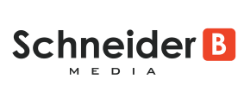Inbound marketing and content marketing are often used interchangeably, but are they the same thing? If not, how are they related?
As a school marketer, you know inbound marketing and content marketing are pillars of a digital marketing strategy. But how do they fit together? There’s lots of confusion about the differences and similarities between an inbound marketing and a content marketing strategy.
Inbound Marketing Vs. Content Marketing
According to research conducted by Hubspot, most marketers agree that content marketing is a subset of inbound marketing. Inbound marketing is a wider methodology where you are designing experiences for your target market (i.e., families) in order to attract them to your school. Content marketing is more about creating and publishing content that drives action on the part of your target audience.
If you’ve been confused about these two strategies, you’re not alone. Some of the confusion comes from the realization that an inbound marketing program needs to include a content strategy in order to be successful.
Before we explore the distinctions between these two marketing strategies, it’s important to recognize that quality content is:
- Creative
- Relevant
- Valuable
When content is creative, relevant, and valuable, it will grab the attention of families, establish relationships with them, increase engagement, and be shared often.
Marketing content is an important pillar of a successful inbound marketing framework. But while it’s essential, it can’t perform all of the functions needed for a successful marketing strategy.
Yes, consistently publishing relevant content will drive traffic. But content alone can’t capture or qualify leads, move families further along in the enrollment journey, or generate inquiries.
What is Content Marketing?
According to Content Marketing Institute: “Content marketing is a strategic marketing approach focused on creating and distributing valuable, relevant and consistent content to attract and retain a clearly defined audience – and, ultimately, to drive profitable customer action.”
There are many forms marketing content can take, such as a web page optimized for SEO, a blog post targeted to a specific audience, visually appealing social graphics, or a video.
An important focus of school content marketing should be telling the stories of students, staff, parents, alumni and your school. And while stories are wonderful, it’s important to remember to use the SEO search keywords as your families.
Your prospective families, those entering your enrollment process, may want a religious school in your area, but may just type in “private school”, making it hard for Google to make the connection to your school. So when it comes to content and SEO, make sure you do your research to determine the best keywords to use.
What is Inbound Marketing?
Inbound marketing is essentially a toolbox full of tools and processes that work together to help organizations market in the way people engage with schools today. Inbound marketing works holistically with your organization to drive traffic, build trust, gain inquiries and enroll students.
It works especially well with complex industries like education where enrollment processes have a longer cycle and parents carefully examine the institution before enrolling, because it allows you to build relationships with your prospective parents at scale.
Inbound marketing improves on traditional marketing by implementing a multi-channel model that not only enhances the families’ journeys, but also ensures the financial security of your school.
To make the most of inbound marketing, you need the right systems in place, such as marketing automation and a CRM to help qualify and nurture inquiries, and provide data your admissions officers can use to help improve enrollment ratios.
The right software also will also help you track the metrics you need to understand the ways potential families are engaging with your online properties as well as creating workflows to seamlessly deliver personalized emails to your potential families based on their interests and needs.
Content is Critical
You need high-quality content to drive results, but it’s only part of the story. Since inbound marketing is data-driven, your content marketing needs to be integrated with your inquiry conversion strategy. Inbound produces results by using content to attract and convert families into inquiries, so the focus is on using SEO to optimize the content and enrollment experience.
When you use all the elements of inbound marketing, it becomes THE powerful approach for school marketing because it drives a repeatable and scalable strategy that produces inquiries month after month.
Final Thoughts
There’s lots more to learn about inbound and content marketing here on SchneiderB Media. Check out these articles to get started discovering more:
Inbound Marketing
- What is Inbound Marketing for Schools?
- Where to Start with Inbound Marketing for Your School
- Free Inbound Marketing Software for Your School
- Inbound Marketing for Private Schools
- 15 Common Barriers to Effective School Inbound Marketing
- Inbound Marketing Trends to Master in 2021
SEO
- What is SEO in School Marketing?
- How to Create an SEO Strategy for Your School Marketing Efforts
- What is SEO for a School Website?
- How SEO Works Step by Step
- Do You Need SEO for Your School Website?
- Top 7 SEO Techniques
- How School Marketers Can Use Local SEO Strategies to Improve Google Ranking
Content Marketing
- What is a Content Strategy?
- How to Create a Content Strategy for School Marketing
- 9 Top Content Marketing Trends for Schools in 2021
- Why Keyword Research Should Guide Your School Content Strategy
- Content Marketing is Showing the World You Are a Rock Star
- Content is the Atomic Particle of All Digital Marketing
Website
- 7 Reasons You Should Redesign Your School’s Website
- Thinking About a Website Redesign? 5 Things You Need to Include
- It’s Time to Rethink the School Website Redesign Process
- The Importance of Information Architecture for School Marketing
- 10 Security Practices to Keep Your School Website Safe
Blog
- The Ultimate Guide to a Successful School Blog
- 6 Superior Strategies for Writing Blog Posts That Will Drive Traffic to Your Site
- 10 Tips for Writing Stellar Blog Posts
- 50 Captivating Blog Topics for Schools
- SEO Coach – Get to the Top of Google!
Landing Pages
- 9 Tips for Designing Effective Landing Pages
- 12 Tips to Increase Landing Page CTA Conversions
- Refining Landing Pages for Your School Website, a Worthwhile Task
Podcast
- The LionShare Enrollment Podcast with Paul Warner
- McDonogh Works Alumni Podcast with Jason Schwartzberg
Videos
- How to Create a Successful School Video Marketing Strategy for 2019-2020
- How to Create Amazing Videos for Your School
- How to Write a School Promotional Script for Your School Marketing Videos
- Are Short-Form or Long-Form Videos Better for School Marketing?
- How to Choose the Right Videographer for Your School
- How to Optimize YouTube Videos for Search
- Why Email Marketing is Still Important to Schools in 2022
- What is an Email Marketing Strategy and How Does It Work?
- What is the Most Effective Email Marketing Strategy for Schools?
- What are the 12 Types of Marketing Emails for Schools?
- 12 Top Email Marketing Services for Schools
Social Media
- Why Use Social Media for School Marketing?
- How Schools Use Social Media for Marketing
- 10 Advantages of Social Media Marketing for Your School
- How to Start Social Media Marketing for Schools
- 5 Easy Steps for Conducting a Social Media Audit for School Marketers
- 8 Top Social Media Strategies for Schools
- Top 6 Social Media Platforms for Schools
- 17 Actionable Ways to Tell Stories on Social Media for School Marketing
- 11 Social Media Hacks Every School Should Try
- 26 Social Media Tools for 2021 and Beyond
- How to Deal with Negative Comments or Reviews on Social Media
- 13 Social Media Metrics That Matter to School Marketers
Do you agree content marketing is a subset of inbound marketing? Why or why not? Please leave a comment below…

